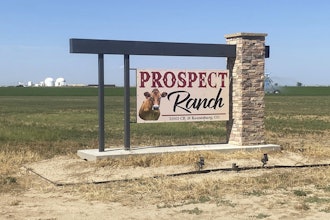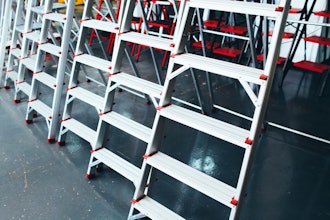
SPOKANE, Wash. (AP) — Workers at the Hanford Nuclear Reservation have started injecting grout into a partially collapsed tunnel that contains radioactive wastes left over from the production of nuclear weapons, the U.S. Department of Energy said Wednesday.
The grout is intended to improve the stability of the 360-foot-long (110 meters) tube, which dates to 1956, and help prevent any radioactivity from escaping into the environment.
It will take an estimated 650 truckloads of grout to fill the tunnel adjacent to the closed Plutonium Uranium Extraction Plant, which produced most of the plutonium for the nation's nuclear arsenal, the agency said. The complicated work should be completed by the end of the year.
"There is no question about the difficulty of the work, but we will work safely and methodically to fill up the tunnel," said Doug Shoop, manager of the agency's Richland Operations Office.
The roof of the tunnel, which was sealed in 1965, partially collapsed on May 9, forcing about 3,000 workers to shelter in place for several hours.
There were no injuries.
Hanford, which is about 170 miles (273 kilometers) southwest of Seattle, was built by the Manhattan Project during World War II as the U.S. raced to beat Germany to create an atomic bomb. Hanford made the plutonium for the atomic bomb dropped on Nagasaki, Japan, and went on to make about 60 percent of the nation's plutonium during the Cold War.
The site now contains the nation's greatest volume of radioactive defense wastes. Cleanup of the site is expected to last until 2060 and cost $100 billion.
The grout will be injected into the tunnel at night. It is engineered to flow easily and will cover the contents, including eight contaminated railroad cars that carry waste.
The tunnel being filled with grout is one of two near the PUREX plant that contain contaminated rail cars and other radioactive waste.
The department concluded earlier this year that there is a high risk that the second, much larger, tunnel could also collapse.
The Energy Department has said that the two sealed tunnels "do not meet current structural codes and standards."
The larger tunnel was built of metal and concrete in 1964. It is approximately 1,700 feet (510 meters) long and is covered with eight feet (2.5 meters) of soil to prevent radiation from escaping. Inside are 28 flat-bed rail cars containing nuclear waste, including giant storage vessels and other large equipment from plutonium production. That tunnel was sealed in 1996 and has not been entered since.






















